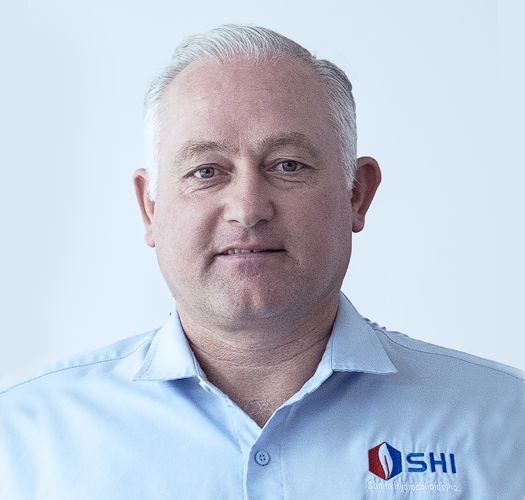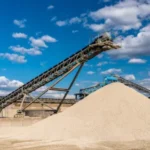What Are Biocides and Why Are They Critical in Oil & Gas Operations?

Oil and gas operations rely on advanced chemical systems to protect assets, extend equipment life and maintain production efficiency. Biocides are essential for controlling microbial growth and biofouling in water-based systems used across drilling, fracturing, production and water treatment. These are chemical or biological agents intended to destroy or render harmless harmful organisms in oilfield systems by chemical or biological means.
These agents prevent corrosion, souring and polymer degradation – issues that can compromise well integrity and flow assurance. In this post, you will get to know what biocides are, how they function and why they’re critical to U.S. field performance.
What Are Biocides?
Biocides are chemical agents used to control or eliminate harmful microorganisms like bacteria, fungi and algae, exerting a controlling effect on these organisms. In oil and gas operations, they treat water and fluid systems to prevent microbial contamination, corrosion and reservoir souring.
Biocides are distinct from other antimicrobial agents and each biocidal product contains at least one active substance responsible for its effectiveness.
There are two main types:
- Oxidizing biocides that attack microbes through oxidation (e.g. chlorine dioxide, sodium hypochlorite)
- Non-oxidizing biocides that disrupt microbial metabolism without oxidation (e.g. glutaraldehyde, DBNPA)
Each type offers distinct benefits depending on water chemistry, temperature and application method. Sunita Hydrocolloids supplies field-tested biocide blends for U.S. oilfield performance.
How Do Biocides Work?
Biocides control microbial threats by attacking key biological functions inside bacteria, fungi and algae. Their action depends on the chemical structure and target organism but most operate through one or more of the following mechanisms:
- Disrupting Cell Membranes – Biocides compromise membrane integrity causing leakage of vital cell contents and rapid cell death
- Inhibiting Enzyme Activity – Some biocides block enzymes that microbes rely on for energy production and replication
- Halting Reproduction – By interfering with DNA synthesis or cell division, industrial biocides prevent microbial populations from multiplying.
In oilfield systems, this microbial control is essential. Without it, operators face:
- Microbially Influenced Corrosion (MIC): Bacteria accelerate metal degradation, threatening pipelines and well casings
- Biofilm Formation: Sticky microbial layers clog equipment and shield bacteria from treatment
- Souring: Sulfate-reducing bacteria (SRB) produce hydrogen sulfide, a toxic gas that lowers crude value and endangers personnel
Why Are Biocides Critical in Oil & Gas Operations?
Microbial contamination in oilfield systems poses a direct threat to equipment, production and safety. Biocide chemicals are the frontline defense protecting operations from costly damage and downtime. The implementation of biocides includes risk management measures to minimize environmental risks while maintaining operational efficiency.
Asset Protection and Corrosion Control
MIC is a significant threat in the oil and gas sector, and has been estimated to account for almost 40% of internal and 20-30% of external corrosion problems in pipelines.
Microbially Influenced Corrosion (MIC) accounts for almost 40% of internal and 20-30% of external corrosion problems in oilfield infrastructure, according to NACE International. Biocides reduce microbial loads that attack steel surfaces, helping extend the life of tubing, tanks and pipelines.
While biocides protect infrastructure, their use must be managed to avoid unintended effects on non-target organisms and prevent secondary poisoning in the surrounding environment.
Water Quality Management
Source water, produced water and flowback fluids are breeding grounds for bacteria. Without proper microbial control, chemical additives lose effectiveness and fluid compatibility suffers. Biocides keep water systems clean and chemically stable.
Operational Efficiency and Cost Savings
Biofouling clogs filters, damages pumps and disrupts flow. That leads to higher maintenance costs and more non productive time (NPT). Biocides help maintain throughput, reduce downtime and lower operating expenses.
Worker Safety and Environmental Compliance
Sulfate reducing bacteria (SRB) generate hydrogen sulfide (H₂S), a toxic gas that endangers crews and devalues crude. Biocides suppress SRB activity and help operators meet EPA and shale play regulations.
Sunita Hydrocolloids offers field-proven biocide blends engineered for U.S. oilfield conditions, supporting safe, efficient and compliant operations.
Key Applications of Biocides in Oilfield Operations
Biocides are used across multiple stages of oilfield operations to prevent microbial contamination, protect infrastructure and maintain fluid performance. They play a vital role in multiple oilfield processes with various biocidal products tailored for specific applications such as product preservation, surface disinfection and antifouling.
The biocides mentioned here are selected for their proven effectiveness in oilfield environments. Their role is operationally critical in the following:
1. Drilling Fluids
Microbial growth in drilling mud can alter viscosity, destabilize the fluid system and reduce lubricity. Biocides prevent bacterial degradation of polymers and maintain the integrity of the mud system especially in water-based formulations.
2. Hydraulic Fracturing
Fracturing fluids are vulnerable to microbial contamination during storage, transport and injection. Quaternary ammonium compounds and oxidizing agents are commonly used as biocides in fracturing fluids to control microbial contamination. Biocides protect fluid chemistry, reduce the risk of reservoir souring and help prevent formation damage caused by biofilms and microbial byproducts.
Sunita Hydrocolloids offers glutaraldehyde-based blends designed for high-performance fracturing environments.
3. Produced Water Treatment
Produced water often contains bacteria that can plug formations or interfere with reinjection. Biocide treatment targets not only bacteria but also other microbes such as algae and fungi, ensuring comprehensive microbial control.
In addition to chemical methods, some treatment strategies may employ biological means to enhance the effectiveness of microbial control, supporting regulatory compliance and protecting reservoir permeability.
4. Storage Tanks and Pipelines
Biofilms in tanks and pipelines reduce flow efficiency and accelerate corrosion. Biocides control microbial colonies, extend equipment life and reduce maintenance costs. Regular dosing helps maintain flow assurance.
Types of Biocides Used in Oil & Gas
Choosing the right biocide depends on application conditions, water chemistry and regulatory limits. Below are the most widely used biocides in U.S. oilfield operations.
Glutaraldehyde
- Function: Non-oxidizing biocide
- Advantages: Long-lasting control, compatible with most fluid systems, effective against sulfate-reducing bacteria
- Uses: Downhole treatments, produced water, stimulation fluids
DBNPA (2,2-dibromo-3-nitrilopropionamide)
- Function: Fast acting and non-oxidizing
- Advantages: Quick microbial kill, minimal environmental persistence
- Uses: Fracturing fluid treatments, surface water conditioning
THPS (Tetrakis Hydroxymethyl Phosphonium Sulfate)
- Function: Non-oxidizing
- Advantages: Biodegradable, low toxicity, effective in sour environments
- Uses: H₂S control, microbial remediation in produced water
Chlorine Dioxide
- Function: Oxidizing biocide
- Advantages: Strong oxidizer, works at low concentrations
- Uses: Surface water treatment, pipeline disinfection
Biocide selection is guided by cost, kill speed, compatibility with other chemicals and environmental impact. For shale and offshore applications, Sunita’s biocide portfolio meets performance and compliance needs.
Choosing the Right Biocide Strategy
Biocide performance depends on how well it fits the system it’s protecting. A one-size-fits all approach doesn’t work in oilfield operations. Smart selection starts with understanding the conditions and constraints of each application.
A. Understand Your System Conditions
Water chemistry, temperature, pH and microbial load all influence the effectiveness of biocides. Understanding how biocides interact with different environmental compartments is essential for effective application.
For example, glutaraldehyde performs well in low to moderate temperatures and anaerobic zones while chlorine dioxide is better suited for surface equipment and aerobic environments.
B. Compatibility with Other Chemicals
Biocides must work in conjunction with friction reducers, crosslinkers, scale inhibitors and other additives. Poor compatibility can cause precipitation, loss of function or damage to downhole equipment. Sunita Hydrocolloids offers blends engineered for chemical harmony in stimulation fluids.
C. Dosage and Contact Time
Underdosing allows microbes to adapt and survive. Overdosing increases toxicity risks and may breach compliance limits. The right dose balances microbial kill rate with safe exposure levels and operational efficiency.
D. Environmental and Regulatory Considerations
EPA regulations and shale basin discharge rules shape biocide selection. Low persistence options like THPS and DBNPA are preferred in sensitive zones due to their rapid breakdown and lower environmental impact.
Biocides and Sunita Hydrocolloids Inc.
Sunita Hydrocolloids supplies biocide technologies engineered for hydraulic fracturing and well completion. These formulations deliver microbial inhibition, protect fluid integrity and work seamlessly with guar-based systems and other oilfield additives. Sunita plays a strategic role in supporting U.S. operators with reliable, field-tested chemical solutions.
Their biocide blends are designed to meet performance, compatibility and compliance needs across shale and offshore applications. Explore Sunita Hydrocolloids Biocides for microbial control built for real-world oilfield conditions.
Final Thoughts
Biocides are essential to keeping oilfield systems clean, safe and productive. A site-specific strategy that accounts for water chemistry, microbial load and regulatory limits is key to getting results. U.S. operators need chemical partners who understand the field and deliver performance without compromise.
Sunita Hydrocolloids supports shale and offshore operations with advanced biocide technologies built for real-world conditions. Ready to strengthen your microbial control program? Contact Sunita Hydrocolloids to start a conversation with their technical team.





